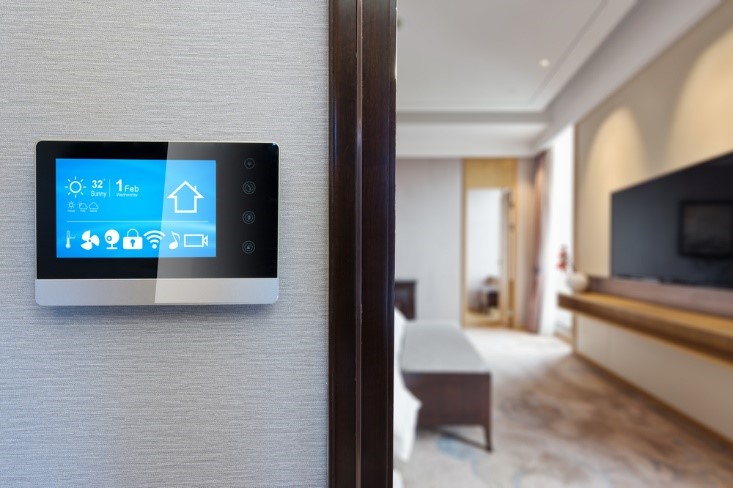By 2022, more than 53 percent of American homes will be smart. But, before you jump on the smart home bandwagon — and, especially, if you’re already on that bandwagon — you need to consider whether you’re ready to face the safety threats that a come with living in a connected home.
That’s right — your smart home could be susceptible to hacking, and with the connected Internet of Things (IoT) devices now controlling everything from the food in our refrigerators to the locks on our front doors, we’re becoming more and more vulnerable to criminals. What happens if a criminal hack into your smart door locks or garage door opener using the app on your smartphone? What if he or she uses data from your fitness tracker or security cameras to learn your daily patterns and ascertain when you’ll be out? Hold on — don’t throw out your smart home devices just yet. Instead, take steps to secure your smart home network, and the devices on it, so you can sleep easy at night while your refrigerator orders milk for your breakfast in the morning.
Know the Risks
You probably already knew that your smartphone, laptop, and tablet need to be protected from malware, phishing scams, and similar forms of cyber-chicanery, and you probably also knew that a solid antivirus protection software is the right way to do it. We’re not telling you to ditch your antivirus — far from it. With the rise of the IoT and the increase in popularity of smart home products, you need your antivirus now more than ever.
Many IoT-enabled devices aren’t as secure against hackers as your laptop or smartphone might be. Manufacturers have had more than 20 years to get used to the idea that hackers want to get into computers, smartphones, and tablets, but many IoT devices are still built without the common protections that more sophisticated web-going devices have. IoT devices may suffer from common vulnerabilities, including a lack of intrusion protection or regular software and firmware updates. This makes them especially vulnerable to cybercriminals.
Protect Your Network
The first and most important step you can take to protect your smart home from hackers is to lock down your network. Make sure your home network uses the Wi-Fi Protected Access (WPA2) encryption protocol. Get a router with firewall protection if you can. Buy your own router, rather than leasing one from your internet service provider (ISP). Not only will this save you money in the long run, but you’ll have more control over the security features it’ll have, and that can make all the difference when it comes to protecting your network and the devices connected to it.
Once you have your home network set up, change the preset login credentials right away. Using the login credentials you were given by your ISP leaves your network vulnerable to intrusion, so change your username to one that doesn’t contain personal information and your password to something strong and secure. Go to your ISP’s website and search for “change Wi-Fi password” in order to find out how to do this. Consider setting up two home networks — one for your phone, laptop, and tablet, and one for everything else.
Secure Your Devices

Keep your devices safe by installing antivirus protection software on those that will run it — laptop, desktop, smartphone, and tablet — and using strong passwords on all devices. Antivirus protection software can keep hackers from accessing your smart home devices by hacking into the smartphone, tablet, or laptop you use to run their associated apps. Make sure you password-protect all your devices, even your smartphone. Just as you changed your preset login credentials for your home network, you should change the preset usernames and passwords on all your connected devices, too.
Learn What Your Devices Are Capable Of
Is your smart TV listening to your conversations? Is your smartphone secretly tracking your movements on Google Maps? Is your robot vacuum planning to murder you? Well, no, it isn’t, but those first two things could definitely be happening. When you get a new device, skim through the user manual with an eye peeled for any capabilities or default functions you might not be comfortable with. Keep abreast of any security concerns other users may have with the devices in your home so that you can address them. Hackers can’t watch you through your webcam if you cover it with tape, right?
Smart home devices are fun and exciting — and they’re making modern life easier and easier. But, like most things, they come with their fair share of risks attached. Don’t let hackers get access to your data or to your physical home. Protect yourself, before it’s too late. Placing automatic trash can in your home can be a great way to make your life smarter.

